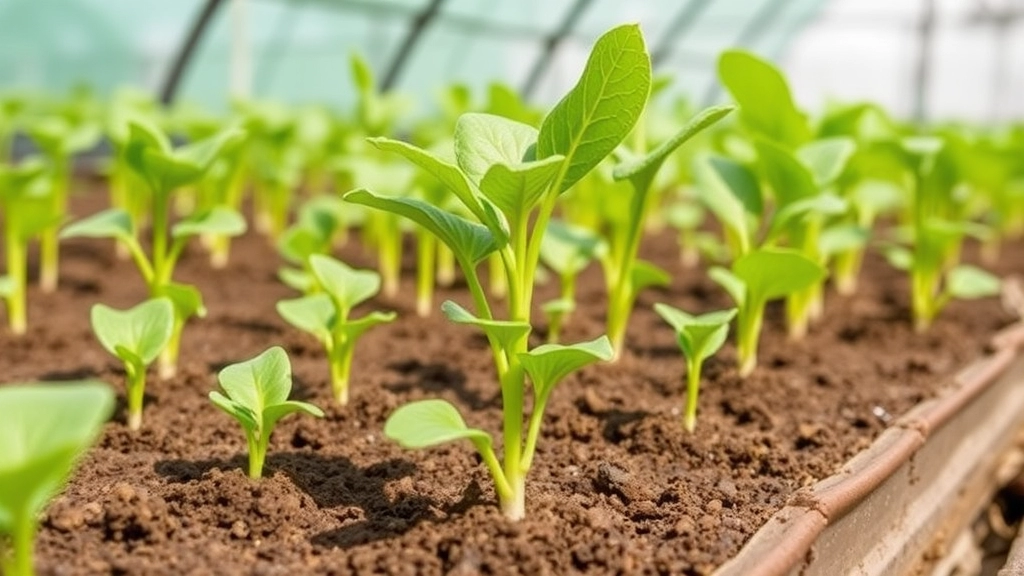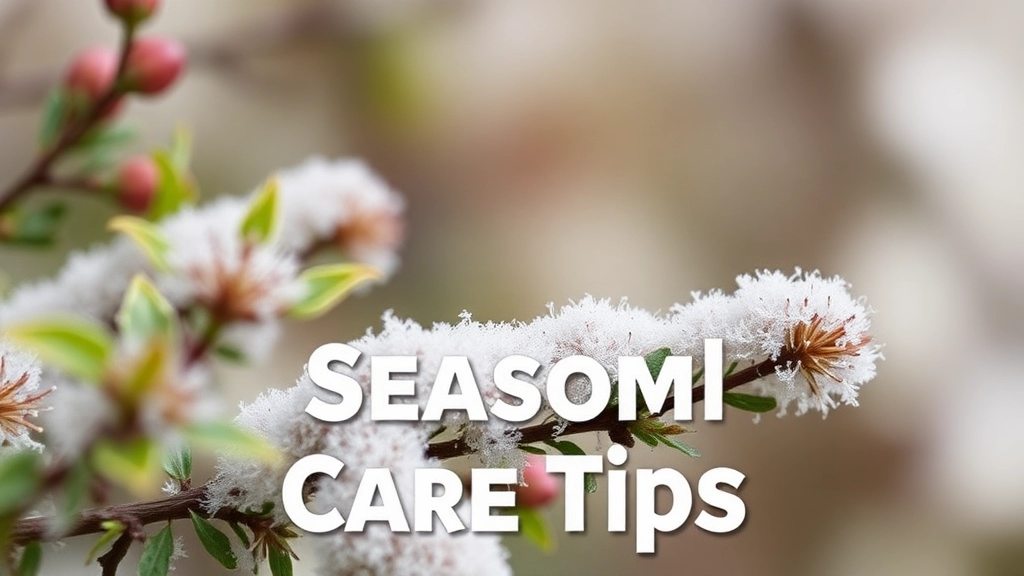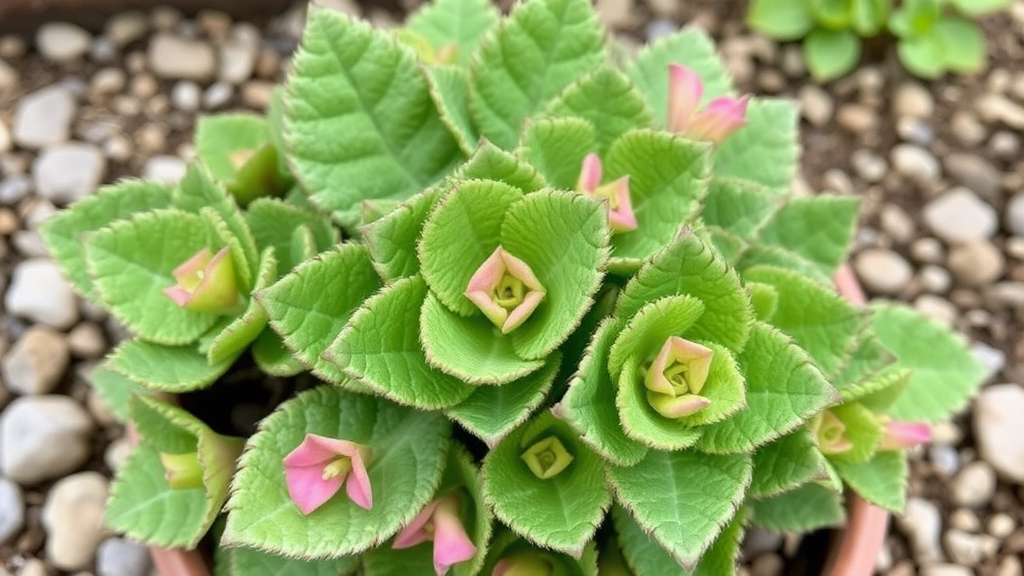Kalanchoe Beharensis Roseleaf
Dive into the fascinating world of Kalanchoe beharensis roseleaf, a succulent that’s as unique as it is stunning. This Madagascar native is not your average houseplant – it’s a conversation starter, a low-maintenance companion, and a true showstopper in any plant collection.
From its velvety, triangular leaves with eye-catching pinkish-red edges to its impressive size and drought-tolerant nature, this plant is full of surprises. Whether you’re a seasoned plant parent or a newbie, the Kalanchoe beharensis roseleaf offers an exciting blend of beauty and resilience that’s hard to resist.
Overview of Kalanchoe Beharensis Roseleaf
Ever heard of the Kalanchoe Beharensis Roseleaf? It’s a real showstopper.
This succulent’s like that cool, quirky friend who always stands out in a crowd.
Native to Madagascar, it’s part of the Crassulaceae family.
But don’t let its exotic origins fool you – it’s tougher than it looks.
The Roseleaf variety? It’s got these stunning pinkish-red edges that’ll make you do a double-take.
Here’s the deal:
- It’s a slow grower, perfect for impatient plant parents
- Drought-tolerant? You bet. It’s like a camel in plant form
- Low maintenance? Absolutely. It’s the plant equivalent of a set-it-and-forget-it appliance
Why do I love it? It’s unique, it’s hardy, and it’s got attitude.
Plus, it’s a conversation starter. Trust me, your mates will be asking about it.
So, if you’re after a plant that’s a bit different, Kalanchoe Beharensis Roseleaf might just be your new best mate.
Characteristics and Appearance
Alright, let’s dive into the wild world of Kalanchoe Beharensis Roseleaf, shall we? This plant’s a real head-turner, and I’m not just saying that because I’ve got a soft spot for succulents.
First things first, this bad boy’s got some serious size. We’re talking about a plant that can grow up to 3-4 meters tall in its natural habitat. That’s like, what, two tall blokes standing on each other’s shoulders? But don’t worry, in your living room, it’ll probably max out at about 1-2 meters. Still impressive, right?
Now, let’s chat about those leaves:
- Shape: They’re big, felty, and triangular. Think of them as nature’s version of those fancy designer throw pillows.
- Colour: The “Roseleaf” part of its name comes from the pinkish-bronze tint on new growth. As they mature, they turn a silvery-green.
- Texture: If you’re into touchy-feely plants, you’ll love this one. The leaves are covered in tiny hairs, giving them a velvety texture.
But here’s the kicker – the edges of the leaves. They’re not just straight, oh no. They’ve got these cool scalloped edges that make the plant look like it’s wearing a fancy ruffled collar. Posh plant alert!
The stem’s pretty interesting too. It’s thick and sturdy, almost tree-like as the plant matures. And if you’re lucky, you might even see some flowers. They’re not the main event, but they add a nice touch – small, bell-shaped blooms in clusters.
Here’s a quick rundown of what you’re looking at:
- Height: Up to 4m in the wild, 1-2m indoors
- Leaf size: Can reach 20-30cm long
- Leaf colour: Pinkish-bronze when young, silvery-green when mature
- Stem: Thick and woody
- Flowers: Small, bell-shaped, in clusters
So, there you have it. The Kalanchoe Beharensis Roseleaf is like the supermodel of the succulent world – tall, striking, and with a unique look that’s hard to ignore. Whether you’re a plant newbie or a green-thumbed pro, this plant’s characteristics and appearance make it a standout addition to any collection. If you’re interested in other unique Kalanchoe varieties, you might want to check out the Kalanchoe Orgyalis as well.
Ideal Growing Conditions
Alright, let’s dive into the ideal growing conditions for Kalanchoe Beharensis Roseleaf.
Ever wondered how to make this beauty thrive? Here’s the scoop:
Light:
- These succulents love the sun, but not too much.
- Aim for bright, indirect light.
- A spot near a window with filtered sunlight is perfect.
- Too much direct sun? You might see some leaf burn.
Temperature:
- Kalanchoe Beharensis Roseleaf likes it warm.
- Ideal range? 15-27°C (60-80°F).
- Can handle a bit cooler, but not below 10°C (50°F).
- Frost? Absolute no-go.
Soil:
- Well-draining soil is key.
- Mix regular potting soil with sand or perlite.
- Why? These plants hate wet feet.
Humidity:
- Not fussy about humidity.
- Average room humidity works fine.
- No need for misting or humidifiers here.
Space:
- Give it room to grow.
- Can reach up to 3-4 meters tall in ideal conditions.
- Pot size matters – go bigger as it grows.
Outdoor vs. Indoor:
- Thrives in both settings.
- Outdoor: Perfect for warm, dry climates.
- Indoor: Great as a statement plant in bright rooms.
Remember, getting these conditions right is half the battle.
Nail this, and your Kalanchoe Beharensis Roseleaf will be the envy of your plant-loving mates.
Watering and Fertilization Needs

Alright, let’s chat about keeping your Kalanchoe Beharensis happy and thriving. Trust me, it’s not rocket science, but there are a few tricks to get it right.
Watering: The Golden Rule
First things first – these succulents are drought-tolerant champs. They’re like that friend who can go ages without a drink and still look fresh. But don’t push it too far, yeah?
- Water deeply but infrequently
- Let the soil dry out between waterings
- In summer, water once every 7-10 days
- In winter, cut back to once every 2-3 weeks
Pro tip: Stick your finger in the soil. If it’s dry up to your second knuckle, it’s time to water.
Overwatering: The Silent Killer
Here’s the thing – more Kalanchoe Beharensis Roselea fs die from drowning than thirst. Sounds crazy, right? But it’s true. Too much water leads to root rot, and that’s a death sentence.
Signs of overwatering:
- Yellowing leaves
- Soft, mushy stems
- Mold on the soil surface
If you spot these, ease up on the H2O, pronto!
Fertilization: Less is More
Now, about feeding your plant. Kalanchoe Beharensis Roseleaf isn’t a big eater. It’s more like that friend who’s always on a diet.
- Use a balanced, water-soluble fertilizer
- Feed once a month during growing season (spring and summer)
- Skip fertilizing in fall and winter
Remember, over-fertilizing can burn the roots. If in doubt, go light.
The Soil Factor
Here’s a game-changer – the right soil mix. It’s like giving your plant the perfect home.
Ideal soil mix:
- 2 parts potting soil
- 1 part perlite or coarse sand
This mix ensures good drainage, which is crucial for healthy roots.
Bottom line: Kalanchoe Beharensis Roseleaf is pretty low-maintenance when it comes to watering and fertilization. Just remember – it’s better to underwater than overwater, and feed sparingly. Get these basics right, and your Kalanchoe Beharensis will be living its best life!
Common Pests and Diseases
Let’s chat about the nasty critters and ailments that can bug your Kalanchoe Beharensis Roseleaf.
Pests? Yeah, they’re a pain. But knowledge is power, right?
Common Pests
- Mealybugs: These little cotton-ball lookalikes love to suck the life out of your plant.
- Spider mites: Tiny terrorists that can cause big damage if left unchecked.
- Scale insects: They’re like armoured tanks, but for your plant’s sap.
Common Diseases
- Root rot: Overwatering’s evil twin. It’s a killer, but preventable.
- Leaf spot: Looks like your plant’s got the chickenpox. Not fun.
- Powdery mildew: Like someone dusted your plant with flour. Weird, right?
Here’s the deal: prevention’s your best mate.
- Keep your plant clean and dry
- Don’t overwater (seriously, it’s a killer)
- Give it plenty of air circulation
Spot something off? Act fast. Isolate the plant, trim affected areas, treat with neem oil.
Remember, a healthy plant is a happy plant. And a happy plant fights off pests and diseases like a champ.
Got questions about keeping your Kalanchoe Beharensis Roseleaf pest-free? Hit me up. I’ve been there, done that, and got the t-shirt.
Propagation Techniques

Alright, let’s dive into how we can make more of these funky Kalanchoe Beharensis Roseleaf plants. Trust me, it’s not rocket science, and you’ll be spreading the love in no time.
Leaf Cuttings: The Easy-Peasy Method
Here’s the deal:
- Snip off a healthy leaf
- Let it dry for a day or two (yeah, just leave it out)
- Stick it in some well-draining soil
- Water sparingly and wait
Boom! In a few weeks, you’ll see tiny roots and maybe even a baby plant. It’s like magic, but it’s just nature doing its thing.
Stem Cuttings: For When You’re Feeling Brave
Want to level up? Try this:
- Cut a stem about 4-6 inches long
- Remove lower leaves
- Let it callous over for a couple of days
- Plant in a mix of perlite and cactus soil
- Keep it warm and slightly moist
Before you know it, you’ll have a new plant ready to rock.
Division: The “Divide and Conquer” Approach
Got a big, bushy plant? Here’s what you do:
- Carefully remove it from the pot
- Gently separate the roots
- Replant each section in its own pot
It’s like giving your plant a new lease on life. Plus, now you’ve got multiple plants to show off or gift to mates.
Seeds: The Long Game
Honestly, this isn’t the most common way to go, but if you’re patient:
- Collect seeds from mature flowers
- Sow them on top of well-draining soil
- Keep them warm and lightly moist
- Wait… and wait some more
It takes time, but there’s something satisfying about growing from seed.
Remember, propagating Kalanchoe Beharensis Roseleaf isn’t an exact science. Sometimes it works like a charm, other times not so much. But that’s part of the fun, right? Keep at it, and soon you’ll have these quirky succulents popping up all over the place. If you’re interested in other Kalanchoe varieties, check out the Kalanchoe Beharensis care guide or learn about the Kalanchoe Tomentosa, also known as the Panda Plant.
Uses in Landscaping and Home Decor
Kalanchoe Beharensis Roseleaf is a game-changer for your space.
Let’s chat about how this bad boy can level up your landscaping and home vibe.
Outdoor Stunner:
- Focal point: Plant it where you want eyes to go
- Texture play: Mix it with smooth-leaved plants for contrast
- Drought-tolerant rock gardens: It’s a natural fit
- Container wow: Pop it in a big pot for instant drama
Indoor Scene-Stealer:
- Sunny spot showpiece: Give it a prime window location
- Shelf life: Its compact size works great on shelves or tables
- Minimalist magic: Perfect for clean, modern interiors
- Texture mix: Pair with sleek furniture for a cool contrast
Practical Perks:
- Low maintenance: Ideal for busy folks or newbie plant parents
- Air cleaner: Helps purify your indoor air
- Conversation starter: Its unique look gets people talking
Pro Tip: Use its silvery leaves to bounce light around a dim room.
Remember, Kalanchoe Beharensis Roseleaf isn’t just a plant, it’s a design element.
Use it to add that extra oomph to your space, inside or out.
Seasonal Care Tips

Alright, let’s chat about keeping your Kalanchoe Beharensis Roseleaf happy all year round. Trust me, I’ve been there – wondering if I’m doing right by my plant babies as the seasons change. So, here’s the lowdown on seasonal care for this beauty:
Spring: Time to Wake Up!
- Gradually increase watering as growth picks up
- Start fertilising lightly – don’t go overboard!
- Check for any winter damage and prune if needed
Summer: Livin’ It Up
- Water more frequently, but let the soil dry between waterings
- Protect from scorching midday sun – these guys like it bright but not too intense
- Keep an eye out for pests – they love the warm weather too!
Autumn: Winding Down
- Reduce watering as growth slows
- Stop fertilising
- If you’ve had it outside, start thinking about bringing it in before the first frost
Winter: Chill Time
- Water sparingly – only when the soil is completely dry
- Keep away from cold drafts and heating vents
- Don’t fertilise at all during this dormant period
Pro Tip: I always set reminders on my phone for these seasonal changes. It’s dead easy and keeps me on track.
Remember, your Kalanchoe Beharensis Roseleaf is pretty chill, but it does appreciate a bit of extra TLC as the seasons shift. Keep an eye on it, and you’ll soon get a feel for what it needs. And hey, if you’re ever in doubt, just give it a poke – if the soil’s dry, it’s probably thirsty!
Troubleshooting Common Issues
Let’s chat about fixing those pesky problems with your Kalanchoe Beharensis Roseleaf.
Ever had your plant looking a bit off? Don’t worry, I’ve been there too.
Here’s the lowdown on sorting out the most common hiccups:
Yellowing leaves?
- Could be overwatering, mate
- Or maybe it’s hungry for some nutrients
- Check if it’s getting enough light
Brown, crispy edges?
- Might be thirsty or sunburnt
- Try moving it to a shadier spot
- Up the humidity if you can
Leggy growth?
- Your plant’s probably stretching for more light
- Give it a sunnier home, but ease it in
Pest problems?
- Keep an eye out for mealybugs and spider mites
- A quick wipe with soapy water often does the trick
Root rot?
- Ease up on the watering, pal
- Make sure the pot’s got good drainage
Remember, plants are pretty tough. With a bit of TLC, your Kalanchoe Beharensis Roseleaf will bounce back in no time.
Got any other issues? Drop me a line, and we’ll sort it out together.
Troubleshooting your Kalanchoe Beharensis Roseleaf doesn’t have to be a headache. Just keep an eye on it, and you’ll catch problems early.
Benefits of Growing Kalanchoe Beharensis Roseleaf
Let’s chat about why you might want to add Kalanchoe Beharensis Roseleaf to your plant collection. Trust me, this isn’t just another pretty face in the succulent world.
First off, this plant’s a real looker. I mean, have you seen those velvety, silver-green leaves? They’re like nature’s version of a cozy blanket. But it’s not just about looks – this plant’s got some serious perks:
- Low maintenance champ: Perfect for busy folks or those of us who aren’t exactly plant whisperers.
- Drought-tolerant: Forgot to water it? No worries, it’ll forgive you.
- Air purifier: It’s like having a natural air freshener in your home.
- Unique texture: Adds a bit of oomph to your plant gang.
Now, you might be thinking, “Okay, but what’s the catch?” Honestly, there isn’t one. This plant’s as easy-going as they come.
Here’s a quick rundown of why you’ll love having Kalanchoe Beharensis Roseleaf around:
- Stress-buster: There’s something calming about those fuzzy leaves.
- Conversation starter: Trust me, your mates will be asking about this one.
- Year-round interest: No seasonal drama here – it looks good all year.
- Space-saver: It grows upright, so it won’t hog all your shelf space.
But here’s the real kicker – this plant’s tough as nails. It can handle a bit of neglect, making it perfect for newbie plant parents or those of us with, let’s say, a less-than-perfect track record with plants.
So, if you’re after a plant that’s easy on the eyes and even easier to care for, Kalanchoe Beharensis Roseleaf might just be your new best mate. Give it a go – your indoor jungle (and your stress levels) will thank you.
FAQs about Kalanchoe Beharensis Roseleaf
1. How often should I water my Kalanchoe Beharensis Roseleaf?
Water your plant deeply but infrequently. Allow the soil to dry out between waterings. In summer, water once every 7-10 days, and in winter, reduce to once every 2-3 weeks. Always check the soil moisture before watering.
2. Can I grow Kalanchoe Beharensis Roseleaf outdoors?
Yes, you can grow it outdoors in warm, dry climates. It thrives in USDA zones 9-11. However, protect it from frost and excessive rainfall. If you live in a colder region, consider growing it in a container that can be moved indoors during winter.
3. How big does Kalanchoe Beharensis Roseleaf grow?
In its natural habitat, it can reach up to 3-4 meters tall. However, when grown indoors or in containers, it typically maxes out at about 1-2 meters in height.
4. Is Kalanchoe Beharensis Roseleaf toxic to pets?
While not highly toxic, it’s best to keep this plant away from pets and children. If ingested, it may cause mild gastrointestinal upset. Always err on the side of caution with curious pets.
5. How can I propagate my Kalanchoe Beharensis Roseleaf?
The easiest method is through leaf cuttings. Simply snip off a healthy leaf, let it callous for a day or two, then plant it in well-draining soil. You can also use stem cuttings or division for larger plants.
6. Why are the leaves on my Kalanchoe Beharensis Roseleaf turning yellow?
Yellowing leaves often indicate overwatering. Ensure your plant has well-draining soil and that you’re not watering too frequently. It could also be a sign of nutrient deficiency or insufficient light. Adjust care accordingly.
7. Does Kalanchoe Beharensis Roseleaf flower?
Yes, it can produce small, bell-shaped flowers in clusters. However, the flowers are not the main attraction of this plant, and it may not bloom regularly when grown indoors.
References
-
Kalanchoe beharensis – Felt Plant, Velvet Leaf World of Succulents – Kalanchoe beharensis
-
Kalanchoe beharensis Care & Propagation Guide Succulents Box – Kalanchoe beharensis Care
-
How to Grow and Care for Kalanchoe The Spruce – Kalanchoe Care Guide

